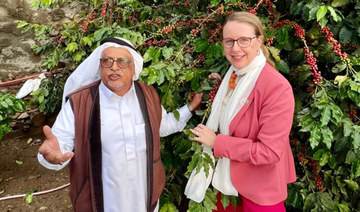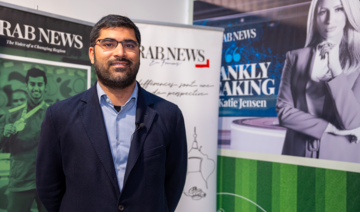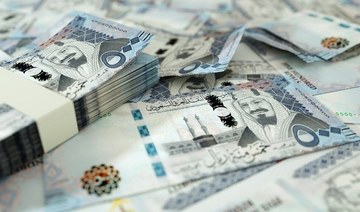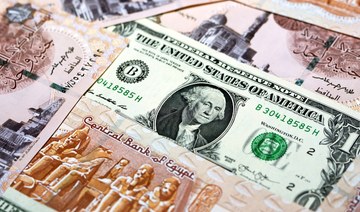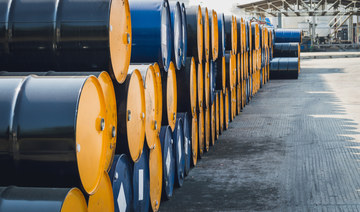ABU DHABI: In the past four years, the United Arab Emirates has grown a small but rising share of its own organic tomatoes, aiming to shore up food security in an import-dependent desert country.
The effort — part of a broader push to produce more home-grown food amid fears climate change could trigger instability in the global food trade — started after the country was hit by food export bans during the 2008-2009 financial crisis.
Today, the move to build up food resilience is paying off early in the face of another crisis: the coronavirus pandemic.
When the United Arab Emirates (UAE) went into lockdown in April to contain the spread of the novel coronavirus, residents had the same reaction as millions of others around the world — they started panic-buying.
The instinct to stock up made sense in a country where more than 80% of food is imported, said Ismahane Elouafi, director general of the International Center for Biosaline Agriculture (ICBA).
Nonetheless supermarket shelves have remained fully stocked, partly because the UAE has long had policies in place to ensure an uninterrupted supply of food from abroad, she noted.
But in the face of the pandemic, the UAE’s confidence that it will continue to have enough food is bolstered by its success in growing its own, using innovations like vertical farming and climate-resilient crops, she added.
“Thanks to the work being done to harness the benefits of innovation, agriculture is becoming possible and profitable in a country with harsh climatic conditions,” Elouafi said.
According to data from the World Bank, the contribution of agriculture to the country’s gross domestic product rose from $2.39 billion in 2012 to $3.06 billion in 2018.
The UAE’s Ministry of Food Security declined to respond to a request for comment.
Currently ranking 21 out of 113 countries on the Economist Intelligence Unit’s Global Food Security Index, the UAE aims to be in the top 10 by 2021 and number one by mid-century.
By then, the federal government hopes half the food Emiratis consume will be produced locally, compared to 20% today.
Under the UAE’s National Food Security Strategy — which was officially launched in 2018, but had already been woven into government policy for several years before — the country has worked to boost domestic food production.
It has built infrastructure, including complexes for cattle-breeding — and introduced financial measures, from exempting value-added tax on food produced on local farms to paying subsidies on fodder.
But traditional farming methods can only go so far in a country with limited supplies of fresh water and arable land.
Last year, the World Resources Institute classified the UAE as under “extremely high water stress,” meaning more than 80% of available surface and groundwater supply is withdrawn on average every year.
The bulk of that water is used by the agricultural sector. Combined with a warming climate and a growing population, this is causing available groundwater levels to drop by 0.5 cm (0.2 inches) per year.
To meet the country’s freshwater needs, the government is increasingly turning to energy-intensive desalination methods.
Another challenge is that less than 1% of the UAE’s land is arable, according to the World Bank.
The focus is on finding ways to farm with fewer resources — which is where technology and experimenting with new crops can help, said Sajid Maqsood, associate professor in the College of Food and Agriculture at United Arab Emirates University.
“Urban and vertical farming has to be an important part of the strategy,” he said by phone.
Farming in the UAE has been moving in a high-tech direction over the past decade.
In 2009, for example, the Middle Eastern country had 50 hydroponic farms, where plants are grown without soil using nutrient-infused water. Today, it has more than 1,000, according to the ICBA.
Most of the farming innovations gaining ground in the UAE involve growing crops indoors, in an attempt to tackle one of the main challenges facing the region’s farmers: the climate.
Global warming is expected to lead to less rainfall, fiercer droughts, higher sea levels and more storms in the UAE over the next 70 years, a group of climate experts said in a 2019 paper.
By 2050 the country’s average temperature will increase by about 2.5 degrees Celsius (4.5 degrees Fahrenheit), they noted.
“At least four months of the year are not conducive to traditional agriculture — heat, humidity and dust are challenges to farming in the region,” explained Digant Raj Kapoor, people manager at Madar Farms, a local agriculture tech company.
“It means that yields and quality cannot be controlled or predicted. An indoor facility is able to tackle this by having as much control over growing conditions as possible.”
One project, Pure Harvest Smart Farms, has been producing a share of the UAE’s home-grown tomatoes since it launched in 2016, using the country’s first technology-enabled greenhouse.
With its climate-controlled system developed in the Netherlands, the Emirates-based start-up can grow year-round, producing about 2 metric tons of pesticide-free tomatoes each day on its 1-hectare (2.5-acre) proof-of-concept farm.
Pure Harvest plans to diversify into other fruits and vegetables, expanding to 30 hectares in the next few months.
In recent years, the UAE has also seen a rise in the number of vertical farms, in which crops are grown stacked under LED lighting and watered with mists or drip systems.
In Dubai, the country’s business and tourism hub, airline catering service Emirates Flight Catering and vertical farm operator Crop One Holdings have launched a $40-million joint venture to build the world’s largest vertical farm.
Crop One Holdings says the 130,000 square-foot (12,077 sq m) farm — due to be completed this year — will produce 6,000 pounds (2,721 kg) of pesticide- and herbicide-free fruits and vegetables daily, using 99% less water than traditional farms.
Branching out into new crops is key to the UAE’s quest to become self-sustaining, said the ICBA’s Elouafi.
The Dubai-based ICBA works with local ministries, farmers’ associations and businesses to introduce climate-resilient crops such as quinoa, pearl millet and sorghum to farmers, she added.
“The global food production system is currently dominated by just a few staple crops — this needs to change,” she said.
For Kapoor at Madar Farms, which has been growing leafy greens and microgreens in vertical systems since 2017, the move into tech-enabled agriculture is inevitable to deal with challenges like climate change and the novel coronavirus.
“The world will have to shift toward controlled-environment agriculture,” he said.
UAE’s high-tech food plan pays off in pandemic
https://arab.news/wqune
UAE’s high-tech food plan pays off in pandemic
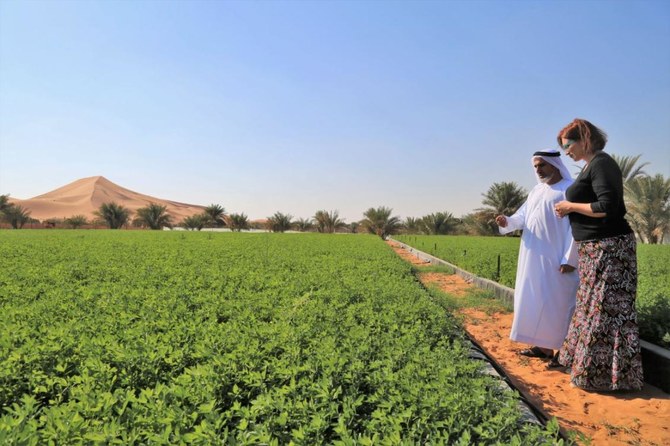
- Agriculture is becoming possible and profitable in a country with harsh climatic conditions
- ICBA works with local ministries, farmers’ associations and businesses to introduce climate-resilient crops such as quinoa, pearl millet and sorghum
Saudi Coffee Co. receives license to build Kingdom’s first coffee production factory in Jazan
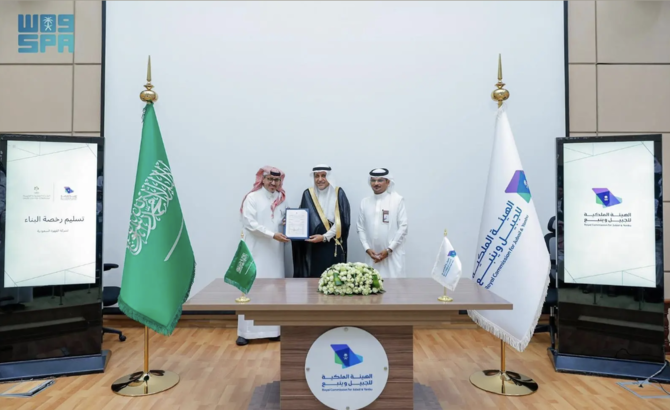
RIYADH: Saudi Coffee Co. has been given approval to begin operations in Jazan, marking the establishment of the first production facility for the product in the Kingdom.
This comes as Khalid bin Mohammed Al-Salem, president of the Royal Commission for Jubail and Yanbu, issued the license to the Public Investment Fund firm, the Saudi Press Agency reported.
The factory, which will be built on an area of 30,000 sq. m, seeks to produce and export Saudi coffee, strengthen local and global supply chains in line with the goals of Vision 2030, and contribute to the sustainability of the sector.
This move came as part of the city’s signing of various investment agreements and capital contracts.
Saudi Coffee Co. signed an investment deal with the Royal Commission for Jubail and Yanbu to construct the warehouse in November 2022.
According to a statement released at the time, the new facility is expected to raise Saudi coffee output from the current 300 tonnes per year to 2,500 tonnes by 2032 while further developing a more sustainable and localized value chain.
Red Sea Global collaborates with Almosafer to elevate tourism sector in Saudi Arabia
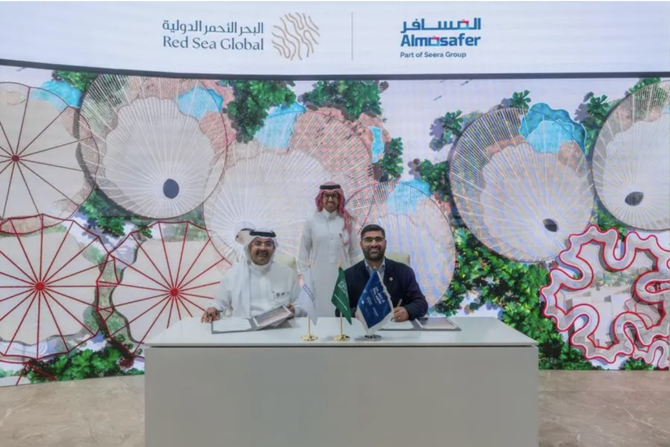
RIYADH: Saudi Arabia’s tourism landscape is set for a boost after multi-project developer Red Sea Global signed an agreement with travel company Almosafer.
According to a statement, the deal will see the firm showcasing and promoting the destination’s tourism developments and offerings.
“With Almosafer’s support, we will help travelers discover just how special this part of the world is, from the pristine coastline and breathtaking coral reefs to the stunning dunescapes and wadis,” said Group CEO of Red Sea Global John Pagano.
He added: “Our growing portfolio is set to unlock the tourism potential of the Red Sea coast for all segments of travel with a diverse range of experiences and offerings.”
Under the deal, both companies will collaborate on targeted marketing and promotion campaigns to raise awareness among travelers, highlighting the offerings in the Red Sea and AMAALA.
Developing the tourism sector is crucial for Saudi Arabia, as the Kingdom is steadily pursuing its economic diversification journey by reducing its dependency on oil.
Saudi Arabia’s National Tourism Strategy aims to attract 150 million visitors to the Kingdom by 2030 and create 1.6 million jobs in the sector.
“The partnership with Red Sea Global reflects our shared vision for redefining luxury travel and shaping the future of luxury tourism in Saudi Arabia. We are excited to leverage our geographical reach and decades of experience to position them as the ultimate destinations that set new standards in bespoke tourism experiences,” said Muzzammil Ahussain, CEO of Almosafer.
With 79 hotels in total, the Red Sea and AMAALA are projected to contribute SR33 billion ($8.79 billion) annually to the Kingdom’s economy upon completion in 2030.
Meanwhile, Red Sea Global also signed another deal with Saudia, the national flag carrier of Saudi Arabia, to streamline the travel experience of employees working with the multi-project developer.
The partnership will enable employees of Red Sea Global and its affiliates to access exclusive upfront discounts and special corporate rates while traveling with Saudia, the Saudi Press Agency reported.
“We are excited to collaborate with Red Sea Global and offer them seamless travel solutions to connect with international partners and talent,” said Saudia chief commercial officer Arved Von Zur Muehlen.
He added: “This partnership reflects Saudia’s unwavering commitment to supporting the Kingdom’s economic objectives and positioning it as a global tourism hub.”
Global ESG sukuk market projected to surpass $50bn thanks to funding diversification
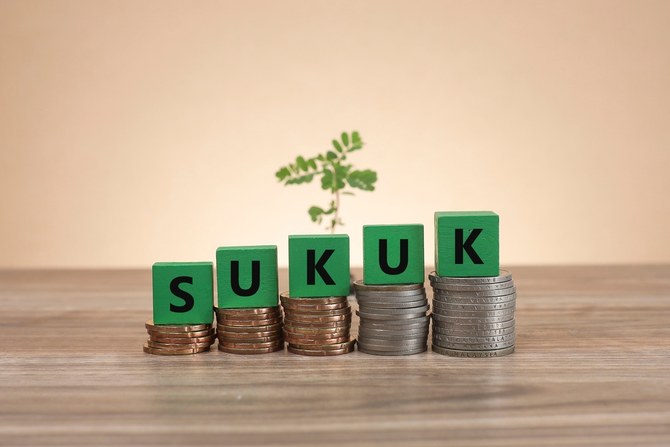
RIYADH: The global sukuk market linked to environmental, social, and governance principles is expected to exceed $50 billion in the next two years driven by funding diversification goals.
According to Fitch Ratings, other factors catalyzing the growth of these Shariah-compliant debt products include new ESG mandates, regulatory frameworks, and government-led sustainability initiatives.
The report highlights that the global ESG sukuk rose by 60.3 percent year-on-year to reach $40 billion outstanding at the end of the first quarter of 2024.
Bashar Al-Natoor, global head of Islamic Finance at Fitch Ratings, said: “Almost 99 percent of all Fitch-rated ESG sukuk are investment-grade. The year started with key regulatory initiatives, which could support standardization, ecosystem development, and aid transparency.”
He added: “There is significant ESG sukuk growth potential, and continuous efforts and increasing confidence will be key to unlocking this.”
The instrument, also known as green sukuk, is a Shariah-compliant financial tool wherein issuers utilize the proceeds solely to finance investments in renewable energy or other environmental assets.
The credit rating agency added that sukuk has a significant share of ESG debt in core markets.
“In the GCC (Gulf Cooperation Council) countries, ESG sukuk reached $15.9 billion outstanding, representing 45 percent of the ESG debt mix, with the balance in bonds,” said Fitch in the report.
However, it added that the market could face challenges from factors like geopolitical tensions, high oil prices, and new Shariah requirements, which might alter sukuk credit risks.
In April, another report from Fitch Ratings indicated that the issuance of this debt product would continue to grow in the remaining months of the year, albeit at a slower pace compared to the first quarter.
The report highlighted that countries in the GCC accounted for 35 percent of the global outstanding sukuk.
Fitch also revealed that the GCC debt capital market has reached $940 billion in outstanding sukuk and is steadily approaching the $1 trillion mark.
In February, it projected that ESG sukuk would exceed 7.5 percent of the global outstanding Islamic bonds in the coming years.
Egypt’s non-oil business shrinks for 41st straight month, PMI shows
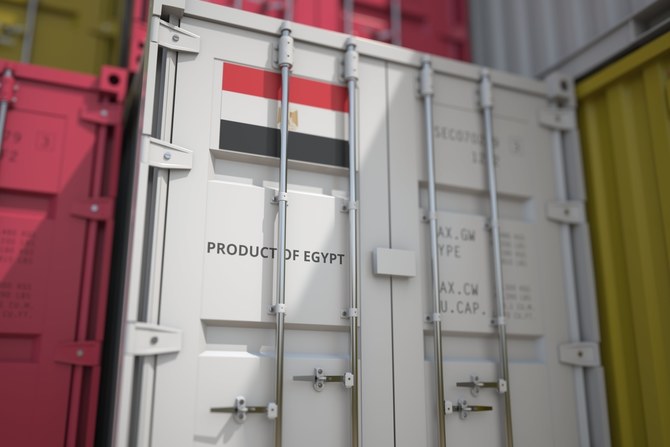
CAIRO: Egypt’s non-oil private sector continued to shrink in April despite a $35 billion investment deal signed with the UAE in February and an $8 billion International Monetary Fund agreement in March, a survey showed on Wednesday.
The S&P Global Purchasing Managers’ Index for Egypt edged down to 47.4 in April from 47.6 in March, remaining below the 50.0 threshold that separates growth from contraction for a 41st consecutive month.
“Business activity once again fell markedly as firms commented on difficult market conditions, with the decline leading to a renewed drop in employment,” S&P Global said.
The employment sub-index slipped to 49.7 in April from 50.8 in March.
Egypt signed an agreement with the IMF on March 6, with an initial $820 million payout received in April and a second, $820 million payout expected after an IMF review in June.
In granting the financial support, the IMF cited shocks to the Egyptian economy from the crisis in neighboring Gaza. Egypt devalued its currency on March 6 and hiked interest rates by 600 basis points as part of the deal.
The output sub-index climbed to 44.8 in April from 44.5 in March and the new orders index improved to 45.5 from 45.0. Business sentiment also improved, with the future output expectations index climbing to 55.3 in April from 52.2 in March.
“Sentiment was at a six-month high, reflecting hopes of exchange rate stability, lower prices and better material availability,” S&P Global said.
Meanwhile, global ratings agency Fitch last week revised Egypt’s outlook to positive from stable.
The agency affirmed Eygpt’s rating at ‘B-,’ citing reduced external financing risks and stronger foreign direct investment.
Foreign investors have poured billions of dollars into Egyptian treasury bills since the country announced the IMF loan program. After the investment in the country’s foreign portfolio and the support from the UAE, Egypt’s net foreign assets deficit shrank by $17.8 billion in March.
Fitch says that initial steps to contain off-budget spending should help to reduce public debt sustainability risks.
The country straddles North Africa and West Asia and has been grappling with an ongoing economic crisis linked to persistent foreign currency shortages. In the fourth quarter, its foreign debt climbed by $3.5 billion to $168.0 billion.
Meanwhile, Moody’s also revised its outlook on Egypt to “positive” in early March while affirming its ratings due to the high government debt ratio and weaker debt affordability compared to its peers.
Oil Updates – prices dip on rising US stockpiles, cautious supply expectations
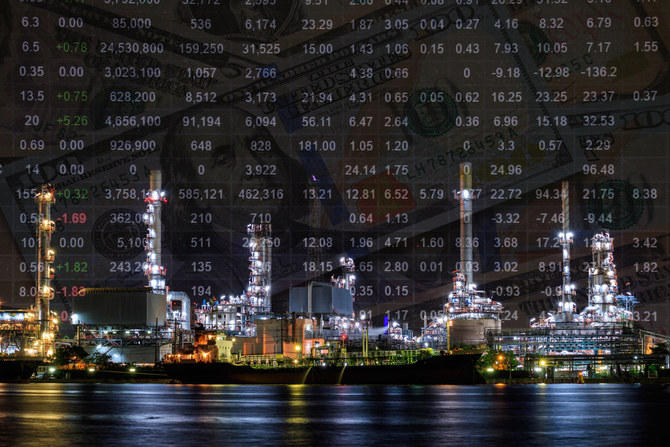
NEW YORK: Oil prices fell in Asian trade on Wednesday as industry data showed a pile-up in crude and fuel inventories in the US, a sign of weak demand, and cautious supply expectations emerged ahead of an OPEC+ policy meeting next month, according to Reuters.
Brent crude oil futures fell 57 cents, or 0.69 percent, to $82.59 a barrel by 9:45 a.m. Saudi time. US West Texas Intermediate crude futures fell 53 cents, or 0.68 percent, to $77.85 a barrel.
Both benchmarks fell marginally in the previous session on signs of easing supply tightness and weaker global oil demand from an Energy Information Administration forecast report on Tuesday.
US crude stocks rose by 509,000 barrels in the week ended May 3, market sources said, citing American Petroleum Institute figures. Gasoline and distillate fuel inventories also rose, they said.
“API numbers released overnight were moderately bearish due to stock builds in both crude and products ... Concern over weaker-than-usual US gasoline demand and this stock-build have weighed on the prompt RBOB gasoline crack,” ING analysts said in a client note.
Official US government data on stockpiles is due at 5:30 p.m. Saudi time. Analysts polled by Reuters expect US crude oil inventories to have fallen by about 1.1 million barrels last week.
Cautious expectations on supply cuts from the Organization of the Petroleum Exporting Countries and its allies ahead of a June 1 policy meeting also weighed on markets.
“Oil prices have come under further pressure as noise around OPEC+ production policy grows,” the ING analysts said. “Expectations are that members will extend their additional voluntary supply cuts beyond the second quarter of this year.”
Meanwhile, hopes of a ceasefire in Gaza have also put pressure on oil prices in recent sessions, with some analysts saying the risk premium on oil declined in tandem.
“The fall in oil prices since Iran and Israel’s back-and-forth attacks suggests that some of the risk premium in prices has now unwound,” said economist Bill Weatherburn from Capital Economics in a client note.
“Prices continue to be supported by OPEC+ production cuts but we suspect that members will gradually unwind these cuts from July, pushing oil prices lower,” he added.
The US believes negotiations on a Gaza ceasefire should be able to close the gaps between Israel and Hamas. US Central Intelligence Agency Director Bill Burns will travel to Israel on Wednesday for talks with the Israeli Prime Minister Benjamin Netanyahu and other top officials, a source familiar with the matter told Reuters.
Some analyst expectations that short-term demand remains well-supported limited overall price declines.
“Much talk of economic run cuts in recent weeks is overblown in our opinion, with margins still healthy enough, which means rather that Asian demand could rather pick up once turnarounds peak and diminish,” said Sparta Commodities analyst Neil Crosby.





